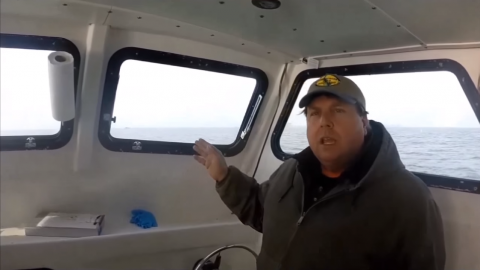Nov242015
Posted at 12:58 PM
Meet Johnny Shockley, a lifelong waterman, who transitioned to oyster farming as he watched his local Chesapeake Bay waterfront change over the years.
While innovation in fisheries conservation and management is quite common in the United States—from efforts to reduce accidental catch of certain species to our emphasis on ecosystem-based management—Johnny Shockley is one of many great examples of the rise of entrepreneurship in our nation’s growing aquaculture industry. Aquaculture—also known as fish or shellfish farming—is the controlled breeding, rearing, and harvesting of plants and animals in all types of water environments including ponds, rivers, lakes, and the ocean.
In the video below, Johnny describes the environmental and economic benefits of oyster farming in the Chesapeake Bay, and the legacy he's trying to leave for future generations of watermen and women.
Marine aquaculture in the United States has many benefits. It contributes to a sustainable seafood supply, supports commercial fisheries, restores habitat and at-risk species, and maintains economic activity in coastal communities and at working waterfronts in every coastal state. Globally, aquaculture is an important method of seafood production and plays an important role in food security. NOAA has a multi-faceted role in aquaculture, from supporting science and research to federal policymaking and regulation.
A compelling case can be made for growing more seafood in the United States to provide even more entrepreneurship opportunities for individuals just like Johnny, whose businesses are evolving with changing conditions. While the worldwide amount of wild-caught seafood has stayed the same year to year, there is a dramatic increase in the amount raised through aquaculture. The United States is the leading global importer of fish and fishery products, with about 90 percent of the seafood we eat (by value) originating abroad—half of which is from aquaculture. Driven by imports, the U.S. seafood trade deficit has grown to more than $14 billion annually.
Although a small producer, the United States is a major player in global aquaculture, supplying a variety of advanced technology, feed, equipment, and investment to other producers around the world. And cutting-edge research by NOAA Fisheries and partners is helping to lay the groundwork for domestic aquaculture to grow.
Those who historically work on the water, like Johnny, are starting to recognize these opportunities in the aquaculture industry—with both economic and environmental advantages—to maintain their businesses, diversify their portfolios, and continue to provide seafood, food security, and resilience for their coastal communities. The United States needs to begin reaping the benefits of our aquaculture science and the jobs and safe seafood that come of it, just like Johnny Shockley has.




